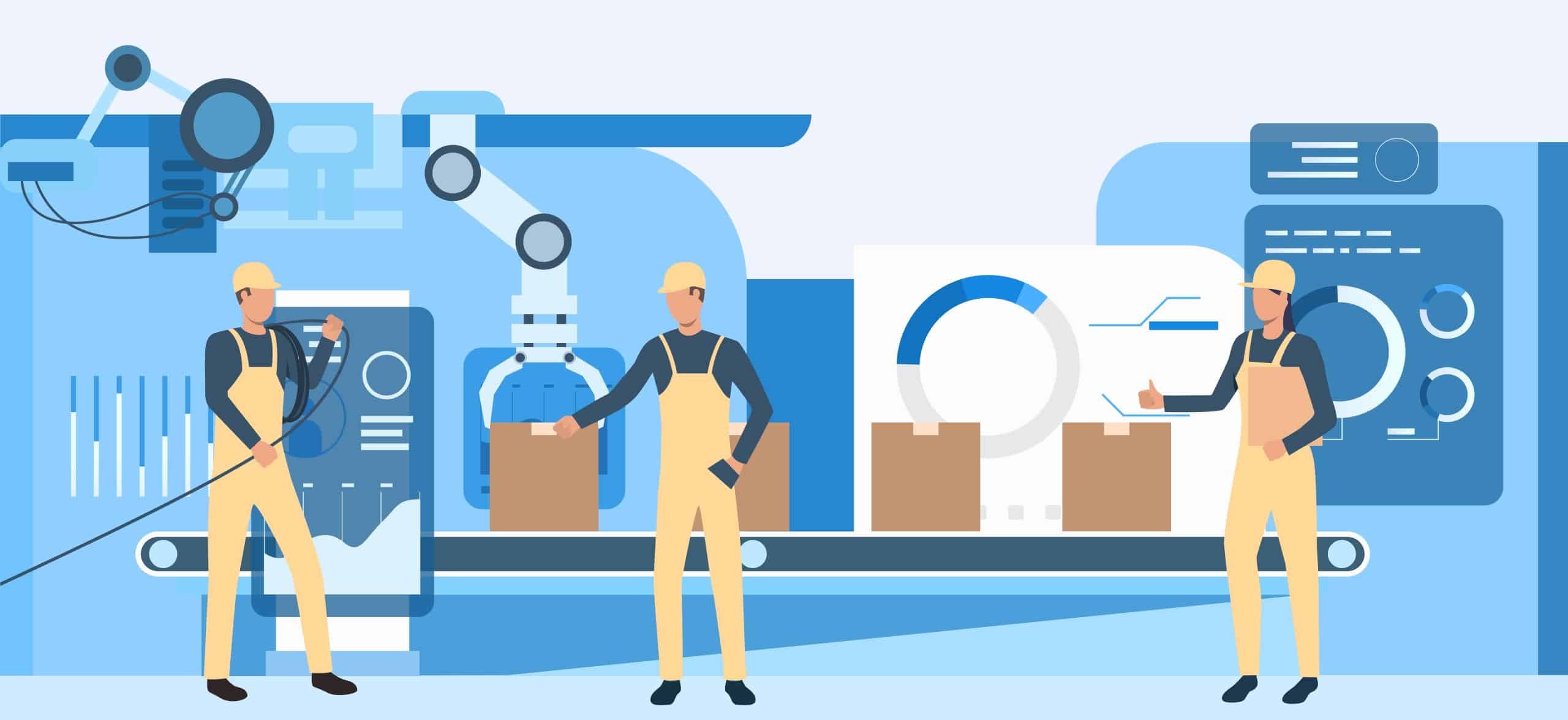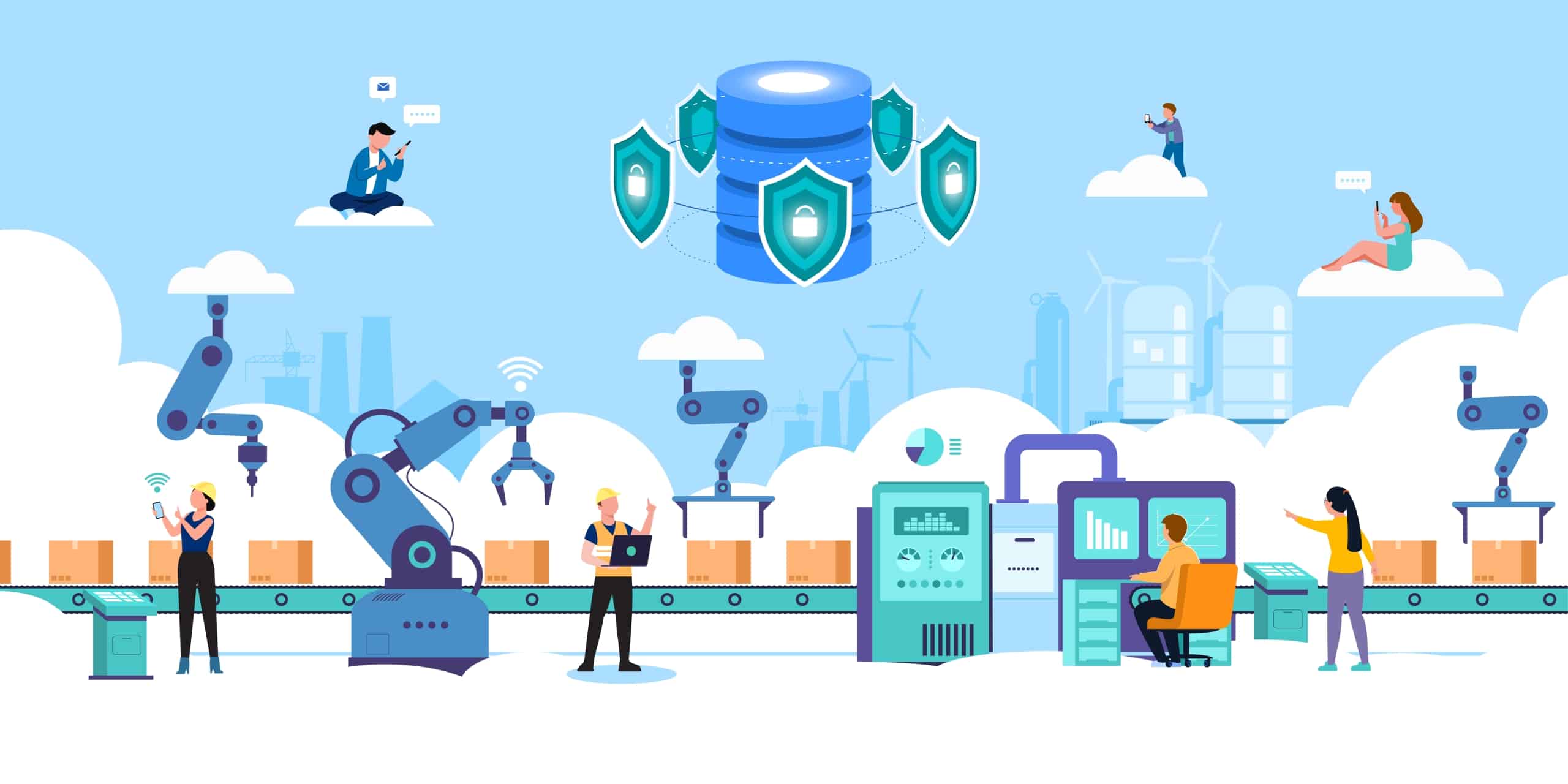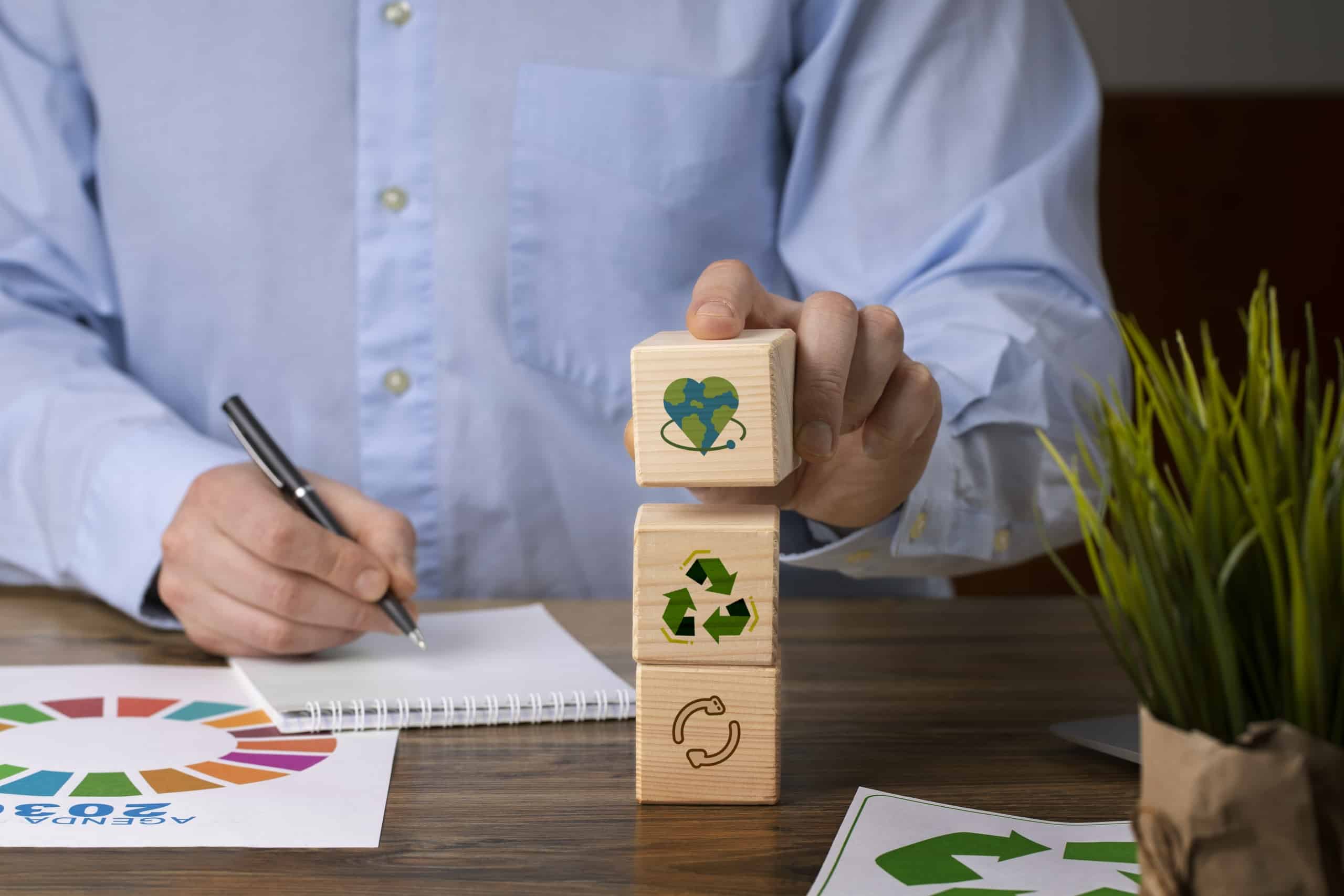Expectation #1: Incorporation of Robotics
Robotics in wet wipes machine technology is changing production and bringing in a new age of increased accuracy, efficiency, and flexibility. Throughout the wet wipes manufacturing process, robots are being used at different phases, which helps to create a more automated and efficient workflow.
Material handling is a key use of robots in the production of wet wipes. The movement of completed goods and raw materials throughout the production line may be effectively managed by robots that are outfitted with sophisticated grippers and sensors. This guarantees a more regular and dependable production process by lowering the possibility of mistakes as well as the need for human labor.
Robots are essential to quality control because they examine and evaluate the consistency of wet wipes. Robots using high-precision sensors and imaging technology can detect flaws, make sure that packing and folding are done correctly, and maintain the required quality standards. This degree of automation not only speeds up the inspection process and enhances the final product’s quality overall, but it also increases production efficiency.
In the packing stage is another noteworthy application. Wet wipe packing, counting, and sorting are among the duties that more and more people are outsourcing to robots. They can do these activities with a degree of efficiency that is difficult to attain via physical labor because of their speed and dexterity. Furthermore, the use of robots in packing makes the workspace safer and more ergonomic for human workers.
Furthermore, the integration of collaborative robots, also known as cobots, is promoting a positive working relationship between humans and machines. Cobots may be incorporated into a number of production processes, assisting human operators in jobs that call for a mix of dexterity and flexibility. This cooperative strategy improves total production flexibility by enabling prompt modifications to satisfy shifting needs.
Expectation #2: Enhanced Efficiency
Wet wipes machine technology is evolving, with energy efficiency emerging as a pillar that emphasizes a dedication to environmentally friendly production methods. A vital component of this endeavor is the incorporation of sustainable energy resources. In order to lessen their reliance on conventional energy grids and the total carbon footprint connected with the production of wet wipes, manufacturers are increasingly using solar, wind, and other renewable energy sources to power their production operations.
A crucial tactic is to optimize heating and cooling systems in addition to using renewable energy. The wet wipes manufacturing process often includes temperature-sensitive procedures, and sophisticated equipment is integrating energy-efficient precision technologies. This helps to create a more ecologically responsible production process by ensuring that the necessary temperature conditions are maintained while using the least amount of energy.
Technologies for intelligent process control are yet another cutting-edge strategy to improve energy efficiency. These systems monitor and modify several production process parameters using sensors and real-time data analytics. Through dynamic energy optimization, these devices save waste and boost overall productivity. This clever management not only lessens the effect on the environment but also puts producers in a position to quickly adjust to shifting production requirements.
Expectation #3: Precision and Customization
Two fundamental elements that will revolutionize wet wipes machine technology in the future are precision and customization. These will enable wet wipes manufacturers to fulfill different customer requirements with a level of accuracy and flexibility that has never been seen before.
The capacity of wet wipes machines to carry out tasks with consistency and exactitude is referred to as precision. Cutting-edge technology like laser cutting and computer-controlled procedures make it possible to produce wet wipes with exact measurements, guaranteeing consistency in terms of size, shape, and thickness. Deviations in dimensions might affect the wipes’ effectiveness and user experience, therefore accuracy is essential to producing a high-quality product. Furthermore, a consistent and dependable final product is guaranteed by careful dose management of additives like scents or disinfectants. Keeping this accuracy throughout the wet wipes manufacturing process, cutting waste, and raising overall efficiency are made possible by the use of sensors and real-time monitoring.
Wet wipes are only one example of the personalized items that are changing in the current market. In wet wipes machine technology, customization refers to the capacity to modify different components of the wet wipes to suit individual customer preferences. This might include altering the material’s kind, size, thickness, and scent. For instance, while some customers may like smaller, more delicate wipes for personal care, others could prefer bigger, more robust wipes for outdoor activities. Modern wet wipes machines with adjustable settings and flexible manufacturing procedures can accommodate this wide range of demands. In addition to helping businesses reach specialized markets, this degree of personalization encourages brand loyalty by catering to the particular requirements of each customer.
Expectation #4: Automation and Industry 4.0 Integration
Automation and Industry 4.0 Integration indicate that the wet wipes machine technology is changing. Automation is essentially the mechanization of jobs that have historically been performed by humans. In the wet wipes manufacturing process, this means that advanced robotics, computer systems, and equipment are used to optimize and simplify production processes. Wet wipes machines that are automated not only increase productivity but also provide a degree of accuracy and uniformity that is difficult to do by manpower. Material handling and quality control tasks may be completed with ease, lowering the need for labor and improving the overall quality of the product.
Conversely, Industry 4.0 introduces digital technology into the heart of industrial processes, therefore bringing about a paradigm change in the sector. The interchange of real-time data, intelligent decision-making, and networked systems are the hallmarks of the Industry 4.0 integration. This integration entails the use of real-time data analytics, predictive maintenance techniques, and Internet of Things (IoT) devices in the context of wet wipes machines. These devices turn into nodes in a network, instantly exchanging data, enabling data-driven decision-making, and supporting an ecosystem of production that is dynamic and adaptable.
Wet wipes machines with integrated Internet of Things (IoT) sensors gather and send data, providing insights into many aspects of the wet wipes manufacturing process. Wet wipes machine manufacturers may monitor and analyze this data as it is created via real-time data analytics, allowing for quick modifications for peak performance. A defining feature of Industry 4.0 is that predictive maintenance algorithms anticipate when maintenance is required, minimizing downtime and extending equipment lifespan. Beyond a single machine, this networked strategy builds a unified supply chain that enables wet wipes manufacturers to easily interact with distributors and suppliers, improving inventory control and quickly meeting consumer requests.
Expectation #5: Digitalization of Documentation and Compliance
The manufacture of wet wipes is undergoing a transformation thanks to the digitization of documentation and compliance procedures, which also improves traceability, streamlines operations, and guarantees compliance with strict regulations. This revolutionary transition from conventional paper-based documentation to digital technologies represents a major improvement in overall compliance, accuracy, and efficiency.
Reducing dependence on physical paperwork, digitalization includes the generation, administration, and storage of records in electronic versions. This pertains to the manufacture of wet wipes and entails switching from manual record-keeping to integrated digital systems that provide smooth communication and data accessibility across the supply chain.
A major advantage of digital documentation is the enhanced precision and dependability of records. The risks of human error associated with manual record-keeping are eliminated with automated data input and storage, guaranteeing constant accuracy of crucial information pertaining to ingredient procurement, quality control, and manufacturing processes. This helps to produce wet wipes that are compliant and of excellent quality, while also improving operating efficiency.
Moreover, real-time regulatory standard compliance monitoring is made possible by the digitization of paperwork. By comparing production data with pre-established standards, automated systems can make sure that each batch of wet wipes fulfills the necessary requirements. This speeds up the process of identifying and resolving any compliance problems and makes it easier to make timely modifications to manufacturing procedures in order to comply with regulations.
Furthermore, cloud-based digital systems make it easier for suppliers, manufacturers, and regulatory agencies to work together. This connectivity facilitates communication, gives stakeholders access to the paperwork they need, and guarantees that everyone is in compliance with the most recent regulations. The digitization of compliance procedures speeds up regulatory audits and improves transparency by making pertinent documents freely accessible and shareable.
Expectation #6: Environmentally Friendly Materials and Processes
In response to the rising worldwide concern about environmental sustainability, wet wipes machine technology is moving towards ecologically friendly materials and procedures. The environmental effect of wet wipes, a product category linked to single-use plastic and non-biodegradable materials, is becoming more and more apparent to wet wipes manufacturers. This move towards sustainability necessitates a thorough reevaluation of the wet wipes raw materials and manufacturing techniques used in the manufacturing of wet wipes.
Using biodegradable materials is one of the main tactics. Conventional wet wipes often include ingredients that pollute the environment by remaining in the environment for long periods of time. These days, wet wipes manufacturers are looking into natural, biodegradable materials like wood pulp, bamboo fibers, and other substitutes. These materials have a far less environmental impact than standard ones while providing the same functionality. Because of this, the wipes have less of an adverse effect on ecosystems when disposed of.
Compostable wet wipes have emerged to complement this change. The biodegradable components used in the manufacturing of wet wipes are intended to break down in a composting setting. This implies that no hazardous residue will be left behind when these wipes decompose into organic substances. Using biodegradable materials encourages a regenerative approach to waste management and manufacturing, which is consistent with the circular economy’s tenets.
Furthermore, wet wipes manufacturers are reviewing the wet wipe formulas they employ. Water-based solutions are becoming more and more popular as substitutes for chemical-heavy ones. This minimizes the possible damage that might occur when the wipes come into touch with ecosystems during disposal, in addition to reducing the environmental effect of the wipes themselves.
Expectation #7: Advanced Packaging Solutions
A significant aspect of the growth of the wet wipes sector is the adoption of advanced packaging solutions, which combine innovation, sustainability, and user convenience. Concerned about the waste generated by single-use plastics, wet wipes manufacturers are moving more and more in the direction of environmentally friendly materials, adopting compostable alternatives, biodegradable films, and recyclable plastics. These environmentally friendly decisions not only support international environmental objectives but also show a dedication to lessening the ecological imprint of the sector.
Advanced packaging goes beyond material selections to include technology that improves supply chain efficiency and the user experience overall. Real-time tracking is made possible by smart packaging technologies like RFID tags and QR codes, which provide transparency and traceability throughout the lifespan of the product. Single-dose package forms lower the danger of misuse and waste while simultaneously promoting cleanliness and meeting customer needs for more thoughtful and effective product delivery.
Advanced packaging greatly relies on user-centric features in addition to sustainability and performance. Reusable closures and easy-open tabs provide user convenience without sacrificing the wipes’ efficacy or freshness. In addition to lessening their impact on the environment, minimalist and space-efficient designs also improve transportation and storage, enhancing the overall effectiveness of the product’s life cycle.








